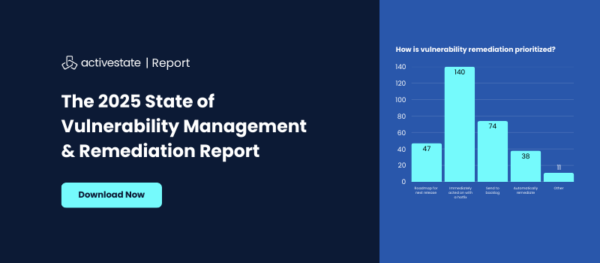All Python package management solutions provide the basic function of uninstalling packages, including pip, pipenv and the ActiveState Platform. However, unless specifically defined in a requirements.txt or pipfile.lock, package managers will not deal with transitive dependencies (ie., dependencies of dependencies).
In this article, we explain how to uninstall Python packages using these popular tools and we also introduce you to the ActiveState Platform. The AS Platform is unique in automatically installing and uninstalling transitive dependencies. Our dependency management system makes it possible to track conflicts between packages, know about platform-specific dependencies, and even track system-level dependencies like C and C++ libraries. Once you are done reading, you can try the ActiveState Platform by signing up for a free account.
Read on to understand how to work with Pip and Pipenv Package Managers to uninstall Python packages.
Checklist
Before packages can be uninstalled, ensure that a Python installation containing the necessary files needed for uninstalling packages is in place. Installation Requirements (for Windows).
How to Uninstall Packages Installed with Pip
To uninstall a package:
pip uninstall <packagename>
How to Uninstall Packages in a Python Virtual Environment
Packages can be uninstalled from a virtual environment using pip or pipenv.
To use pip to uninstall a package locally in a virtual environment:
- Open a command or terminal window (depending on the operating system)
- cd into the project directory
pip uninstall <packagename>
To use pipenv to uninstall a package locally in a virtual environment created with venv or virtualenv:
- Open a command or terminal window (depending on the operating system)
- cd into the project directory
pipenv uninstall <packagename>
How to Globally Uninstall Python Packages
In some cases, packages may be installed both locally (e.g., for use in a specific project) and system-wide. To ensure a package is completely removed from your system after you’ve uninstalled it locally, you’ll also need to uninstall it globally.
To uninstall a package globally in Windows:
- Open a command window by entering ‘cmd’ in the Search Box of the Task bar
- Press Ctrl+Shift+Enter to gain Administration (Admin) privileges
pip uninstall<packagename>
To uninstall a package globally in Linux:
- Open a terminal window
sudo su pip uninstall <packagename>
How to Uninstall Package Dependencies with Pip
When you install a package with pip, it also installs all of the dependencies the package requires. Unfortunately, pip does not uninstall dependencies when you uninstall the original package. Here are a couple of different procedures that can be used to uninstall dependencies.
- If a package has been installed via a pip requirements file (i.e., pip install requirements.txt), all of the packages in requirements.txt can be uninstalled with the following command:
pip uninstall requirements.txt
- If a requirements.txt file is not available, you can use the pip show command to output all the requirements of a specified package:
pip show <packagename>
Example:
pip show cryptography
Output should be similar to:
'Requires: six, cffi'
These dependencies can then be uninstalled with the pip uninstall command. However before uninstalling, you should ensure that the packages are NOT dependencies for other existing packages.
How to Uninstall Package Dependencies with Pipenv
To uninstall all the dependencies in a Pipenv project:
- Open a command or terminal window
- cd into the project directory
pipenv uninstall --all
How to Uninstall a Package Installed With Setuptools
Any packages that have been configured and installed with setuptools used the following command:
python setup.py install
Unfortunately, there is no python setup.py uninstall command. To uninstall a package installed with setup.py, use the pip command:
pip uninstall <packagename>
Be aware that there are a few exceptions that cannot be uninstalled with pip, including:
- Distutils packages, which do not provide metadata indicating which files were installed.
- Script wrappers installed by the setup.py develop command.
Next Steps
Resolving packages when installing or uninstalling an environment can be an extremely slow (or even manual) process. You can speed things up considerably using the ActiveState Platform, which automatically resolves dependencies for you–fast! Get started free on the ActiveState Platform.
Or just install Python 3.9 and use the included command line interface, the State Tool, to “state install” the packages you need:
>state install numpy ╔════════════════════╗ ║ Installing Package ║ ╚════════════════════╝ Updating Runtime ──────────────── Changes to your runtime may require some dependencies to be rebuilt. numpy includes 2 dependencies, for a combined total of 8 new dependencies. Building 8/8 Installing 8/8 Package added: numpy
Frequently Asked Questions
What’s the easiest way to pip uninstall all Python packages?
The simplest way to pip uninstall all packages is to create a requirements.txt file that contains all the packages to be uninstalled. You can then uninstall all packages at once by running:
pip uninstall -r requirements.txt -y
What is the difference between pip uninstall vs. pipenv uninstall?
While both commands (pip uninstall <packagename> and pipenv uninstall <packagename> will uninstall packages, you should only use pipenv to uninstall a package locally in a virtual environment created with venv or virtualenv.
How to manage Python dependencies with virtual environments.
How do I uninstall pip?
It is NOT recommended to uninstall pip from your system because that would render your Python project unmanageable. Instead, the best idea is to either uninstall the entire project, or else upgrade or downgrade pip in place.
To upgrade pip, run the following command:python -m pip install -U pip
To downgrade pip to a specific version (in this case version 18), run the following command:python -m pip install pip==18.0
Are there alternatives to pip for uninstalling Python packages?
You can use Pipenv instead of pip to uninstall packages in a Python virtual environment. Pipenv might be a better choice for managing multiple Python environments.
Alternatively, if you’re using ActiveState Python, you can use our package management tool (State Tool) to uninstall Python packages by running the following command:state uninstall <packagename>
Watch the video on how to uninstall Python packages using the State Tool.









